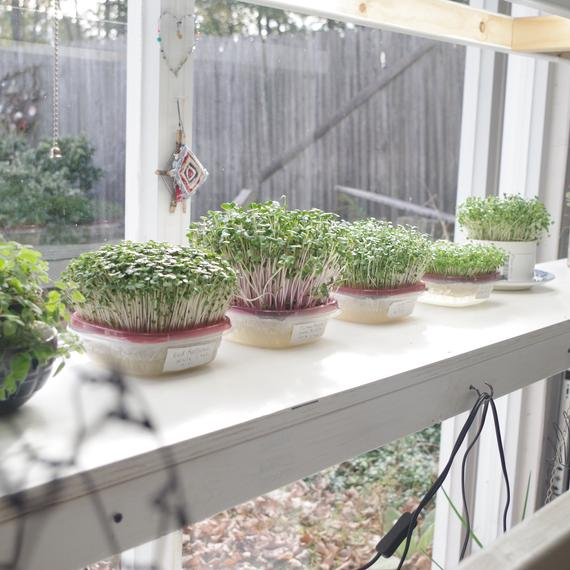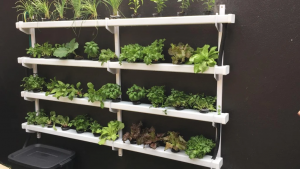By Jennifer Walter
Now because I am living on the great plains I realized there is a lot of wind, snow, bitter cold, and rapidly changing weather (not sure if that last bit is a Montana thing or a living on the plains thing). From a few different communities, I have been told that the high tunnels built in the area literally flew away. Now I know greenhouses like high tunnels are relatively light but can you imagine a constant wind that was so powerful it ripped up the anchors from the ground and just blew it away? Now, to be fair the company that installed them did not have all the greenhouses get up and walk away, some just had tears in the plastic lining and needed to be patched. Still, it goes to show you when dealing with mother nature you work around her not the other way around.
Hydroponics seems to be a decent way to mitigate wacky weather and help provide better nutrition year-round. Now the most efficient way to use hydroponics is in a greenhouse because you do not have to buy grow lights and pay for electricity costs, it is free to use the sun’s energy after all. Plus in a greenhouse, it is easier to control the temp and humidity and you typically have a larger space to grow plants increasing the opportunity to turn it into a business or at least turn a profit here and there. However, in places where the community does not have ready access to a community greenhouse, most depend on convenience and grocery stores which can be a great distance for the majority of people.
Based on these facts I still thought implementing hydroponics in people’s homes would be a worthwhile effort. The feedback I have gotten back so far shows a real interest, not just in homes but community buildings as well. Many of the communities are already interested in food sovereignty and some are even doing canning workshops so they have better access to all kinds of food through the winter with the side benefit of fewer trips to the store for staples.
Hydroponics can be very expensive when buying a system from a store. However, with a bit of creativity and ingenuity, you can create your own system tailored to your needs at a much cheaper price. There are many different systems that can be built, wall units, Tubberware, buckets, and tub systems, A-frames, or lean too systems, even a tray, and bookcase system. To get started you need to pick the right system for what you want to grow, pick a growing medium, buy some hydroponic nutrients, seeds or seedlings and maybe a grow light. Unless you are setting up a system in the basement you can position your set up near a window and have one or two grow lights to supplement if your plant needs the extra light.
There seems to be a way to grow just about anything hydroponically but there are those that are easier to grow in homes with limited space such as lettuce, herbs, microgreens, radishes, kale, spinach, beans, and strawberries. If you have a bit more room and better lighting you can even grow squash vertically from a bucket. Tomatoes and peppers tend to need more light as well however, most people find they can grow them without too much difficulty. Another great benefit is a majority of the plants can be grown, harvested, and then they re-grow limiting how much you need to buy seeds.
I am really excited to start doing workshops around the community teaching about this technique and how to build these systems.










